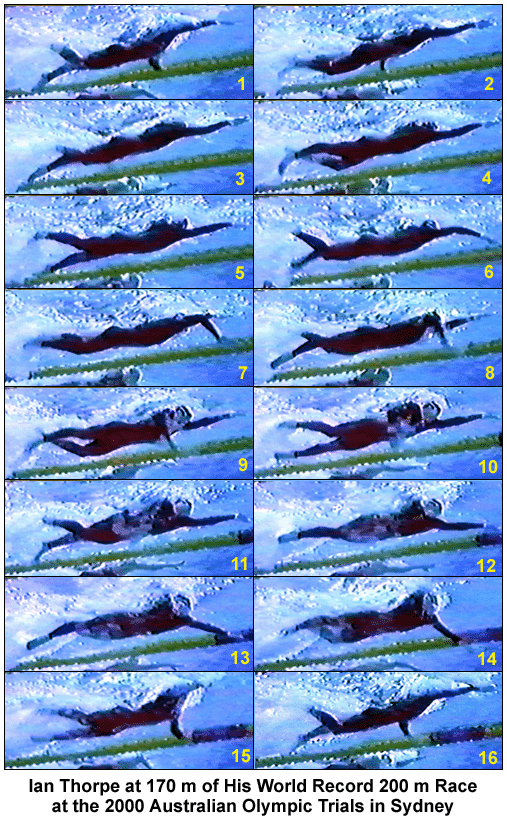

IAN THORPE AT 170 m OF HIS WORLD RECORD 200 m RACE AT THE 2000 AUSTRALIAN OLYMPIC TRIALS IN SYDNEY
Each frame is .1 seconds apart. Ian Thorpe's time for this race was 1:45.51 seconds. This stroke analysis is from Thorpe's right and includes a moving sequence in real time, a moving sequence where each frame is displayed for .5 of a second, and still frames.
The following image sequence is in real time. It will play through 10 times and then stop. To repeat the sequence, click the browser's "refresh" or "reload" button.

The following image sequence shows each frame for half a second. It will play through 10 times and then stop. To repeat the sequence, click the browser's "refresh" or "reload" button.

At the end of the following narrative, each frame is illustrated in detail in a sequential collage.
In this sequence, Ian Thorpe demonstrates his right arm pull more clearly than in the sequence at 30 m. There are two features about the right arm movement pattern that are worthy of note.
The second feature suggests that the swimmer is more intent on creating direct propulsive force than adhering to some stylized model of "correct" stroking.
The swimmer in the background is Michael Klim. His right arm also demonstrates an "elbow-up" position early in the pull.
A feature of note is the imbalance in Ian Thorpe's stroke. When the right arm enters, the left arm is in the latter part of its propulsive phase (Frame #1). When the left arm enters, the right arm is still positioned forward of the head and is in the early stage of its propulsive phase (Frame #7). These two different actions place the shoulders in a different role for each arm stroke.

Reference
Cappaert, J. M., & Rushall, B. S. (1994). Biomechanical analyses of champion swimmers. Spring Valley, CA: Sports Science Associates.
Return to Table of Contents for this section.
